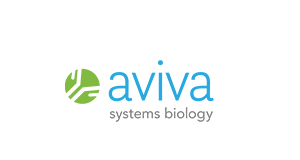Rubella Virus IgG quantitative
Product Name: Toxocara canis IgG - ELISA
# of Samples: 1 x 96 Assays
Intended Use: The Toxocara canis IgG-ELISA is intended for the qualitative determination of antibodies against Toxocara canis circulating in human serum or plasma (citrate).
Introduction: Toxocara canis (an ascarid) is a parasitic nematode (roundworm) commonly found in the intestine of dogs. Humans are paratenic hosts who become infected by ingesting infective eggs in contaminated soil. After ingestion, the eggs yield larvae that penetrate the intestinal wall and are carried by the circulation to a wide variety of tissues (liver, heart, lungs, brain, muscle, eyes). While the larvae do not undergo any further development in these sites, they can cause several local reactions that are the basis of toxocariasis.
In most cases, Toxocara infections are not serious, and many people, especially adults infected by a small number of larvae (immature worms), may not notice any symptoms. The most severe cases are rare, but are more likely to occur in young children, who often play in dirt, or eat dirt contaminated by dog stool. The two main clinical presentations of toxocariasis are Ocular Larva Migrans (OLM), an eye disease that can cause blindness (each year more than 700 people infected with Toxocara experience permanent partial loss of vision), and Visceral Larva Migrans (VLM), a disease that causes swelling of ancillary bodyÂ’s organs or central nervous system.
The presence of parasite resp. infection may be identified by
Microscopy
Serology: Detection of antibodies by ELISA
Principles of the assay: The qualitative immunoenzymatic determination of antibodies against Toxocara canis is based on the ELISA (Enzyme-linked Immunosorbent Assay) technique.
Microtiter strip wells are precoated with synthetic Toxocara canis antigens to bind corresponding antibodies of the specimen. After washing the wells to remove all unbound sample material horseradish peroxidase (HRP) labelled Protein A Conjugate is added. This conjugate binds to the captured Toxocara canis specific antibodies. The immune complex formed by the bound conjugate is visualized by adding Tetramethylbenzidine (TMB) substrate which gives a blue reaction product. The intensity of this product is proportional to the amount of Toxocara canis specific antibodies in the specimen. Sulphuric acid is added to stop the reaction. This produces a yellow endpoint colour. Absorbance at 450 nm is read using an ELISA microwell plate reader.
Storage and Stability: The reagents are stable up to the expiry date stated on the label when stored at 2...8 C.
References: Glickman, L., Schantz, P., Grieve, R. „ Toxocariasis“. Immunodiagnosis of Parasitic Diseases. Vol. 1, Helminthic Diseases. Ed. Walls and Schantz. Academic press, 1986. pp. 201-231.Schantz, P. Toxocara Larva Migrans Now. Am J Trop Med Hyg. Vol. 41 (Sup 3), 1989, pp. 21-34.Jacquier, P. et al. Immunodiagnosis of toxocariasis in humans: Evaluation of a New Enzyme-linked Immunosorbent Assay Kit. J. Clin. Micro. Vol. 29 #9, Sept. 1991, pp. 1831-1835.Carlier, Y. et al. The use of an Excretory-Secretory Antigen for an ELISA Specific Serodiagnosis of Visceral Larva Migrans. Biomedicine. Vol. 36, 1982, pp. 39-42.Brunello, F. Falagiani, P., Genchi, C. Enzyme Immunoassay (ELISA) for the Detection of Specific IgG Antibodies to Toxocara canis ES Antigens. Boll. Ist. sieroter. Milan. Vol. 65#1, 1986, pp. 54-60.Josephson, S.L. Toxocariasis. Laboratory Diagnosis of Infectious Diseases - Principles and Practices, Vol. 1, 1988, pp. 993-997.
| SKU | AVIGWB-31CB3E-96W |
|---|---|
| Manufacturer | Aviva Systems Biology |
| Manufacturer SKU | GWB-31CB3E-96W |
| Package Unit | 96 Wells |
| Quantity Unit | PAK |
| Product information (PDF) |
|
| MSDS (PDF) |
|

 Deutsch
Deutsch





